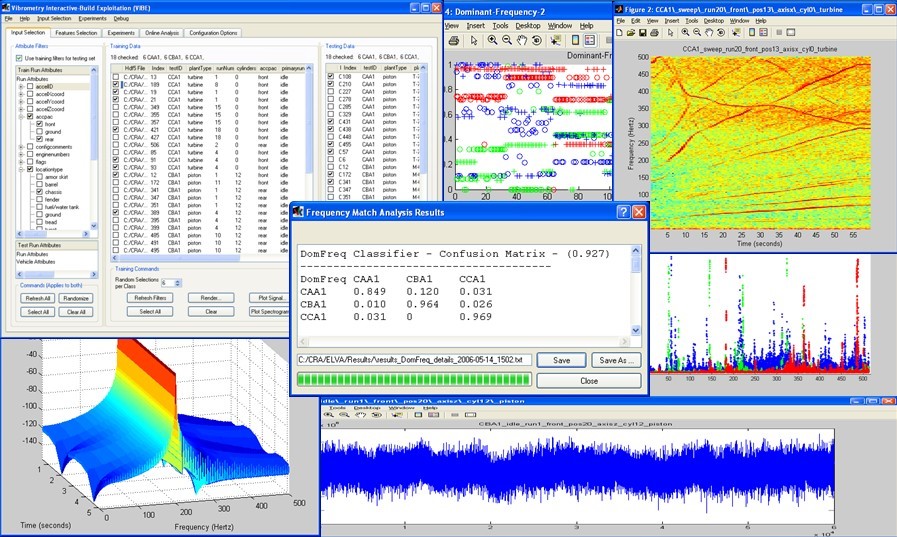The Situation
Laser vibrometry (LV) and micro-laser interferometer Doppler (MLID) sensors measure minute vibrations on the surface of an object from large standoff distances. Automatic target recognition (ATR) using imaging sensors is extremely sensitive to differences between operating conditions under which the algorithms were developed and the conditions under which the fielded algorithms are used. For example, a target’s signature is influenced by the time of day, the time of year, the weather, the target geometry, and the sensor viewing angle. The ATR task is to analyze the signal’s spectral signature to determine what type of vibration sources the vehicle contains, and thereby identifying the vehicle type. The intuitive goal is to use an engine’s vibration signature to reliably identify the vehicle as a potential target. For instance, turbine engines produce a much different vibration signature than piston engines. This distinction allows classification of vehicles into turbine and piston categories. Even when two different vehicles share an engine type, differences in vehicle size and construction make vibration signatures unique. For two vehicles having the same engine type, further categorization may also be possible due to factors such as different hull plating, wheel types, or the number of cylinders in piston engines. With advanced sensors such as LV and MLID, AFRL needs an “ATR researcher’s workbench” to support scientific research and engineering understanding of how to best exploit these sensors to support Warfighters and to create signal processing, and classification algorithms to actualize their use.
The Charles River Analytics Solution
Scientists and software engineers at Charles River Analytics developed the Vibrometry Interactive Build Environment (VIBE) workbench, which has the ability to run targeted research experiments that extract features using a large variety of built-in features and execute classifiers during online analysis in real-time. We developed a robust, extensible software application for loading, filtering, extracting features from, and classifying large datasets of vibrometry data in an advanced hierarchical database format. The VIBE workbench has an integrated graphical user interface that enables the user to rapidly perform a wide range of experiments on test data with varying operating conditions similar to those produced by a fielded system. VIBE users can choose from a large set of frequency-domain feature extraction routines, or they can write their own in MATLAB, using our custom plug-in adapter. Users can then apply algorithms, such as RELIEF-F, for automated feature selection to determine which features provide the best class separability, or the K-Means clustering algorithm to decide how many unique classes are present. For classification, VIBE offers a choice of three feature-based classifiers: Naive Bayesian; K-Nearest Neighbor; and Fuzzy-ARTMAP; as well as the novel Frequency Match Analysis and Throttle Signature Matching techniques that we developed specifically for the vibrometry ATR problem. The VIBE system has demonstrated a robust ability to identify vehicles and their components based on the unique vibration patterns of their different engines.

VIBE workbench with representative data and classification result visualizations
The Benefit
VIBE has helped AFRL to better understand and improve their sensors and the algorithms that support the sensors. VIBE gives the researcher “design of experiment” capability with the ATR researcher’s “workbench.” This allows the researcher to experimentally, and at low cost, develop and refine algorithms that leverage vibration-based sensor technology. By supporting the deep understanding of the underlying signals and their ability to discriminate among potential target vehicle classes, VIBE enhances the effectiveness of these sensors for future applications.
